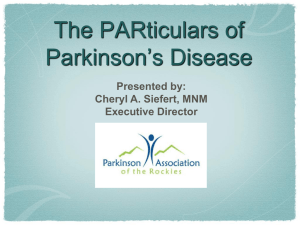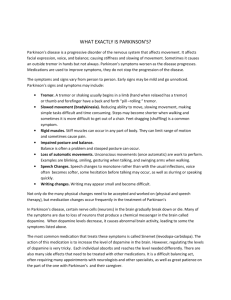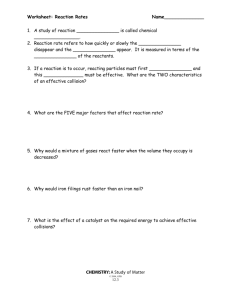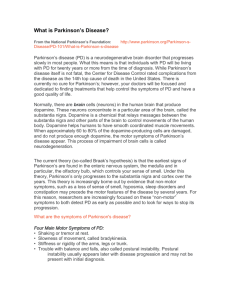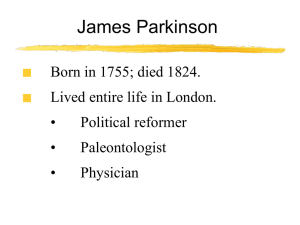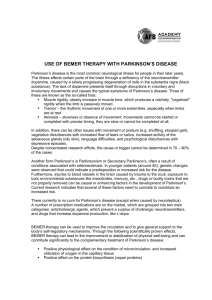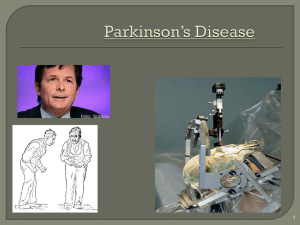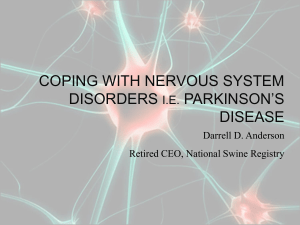File
advertisement
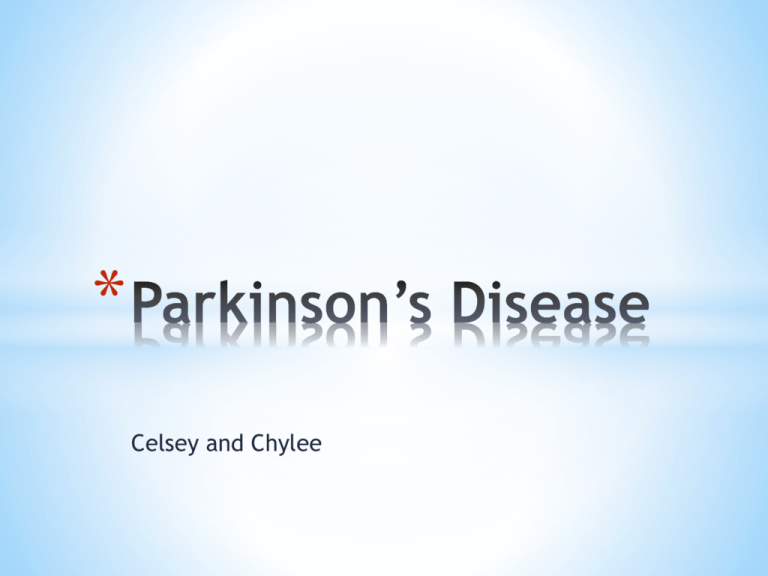
* Celsey and Chylee *John, 55 years old, comes in to your office with his wife, Rita. She is concerned because she has seen some changes in her husband. She reports that at some points he seems to be moving in slow motion. Getting dressed and ready to leave the house in the morning seems to take longer every day. She has also noticed that he often loses his balance and when he thinks she is not looking, he often keeps a hand on the wall for support. John keeps relatively quiet and when asked, claims nothing is wrong, but as he passes you his paperwork, you notice that his hand is shaking. You look down at the paper and notice that his handwriting is so tiny that it’s almost illegible. * *Age: 55 *“moving in slow motion” *Getting dressed and ready to leave the house takes longer every day *Frequent loss of balance *Shaky hands *Tiny handwriting * *The patient was diagnosed with Parkinson’s Disease. *In order to diagnose a patient with PD, a neurologist will come to a conclusion based on patient symptoms and a physical examination. Although this disease can be hard to accurately diagnose, the exam may show changes in heart rate, shaking, muscle loss, jerky or stiff movements, and difficulty beginning or finishing a movement. Symptoms typically become more obvious as the disease worsens, and brain scans and laboratory tests may be requested to rule out other possible diseases. * *Parkinson’s Disease, or PD, is a neurological motor system disorder, which results from the loss of brain cells that produce dopamine, a chemical that helps send messages to the muscles. PD often develops after the age 50 and includes symptoms that affect muscle movement: tremors, slowed movement, stiff muscles, impaired posture or balance, loss of automatic movements, and speech and writing changes. Symptoms may also include anxiety, stress, confusion, and fainting. * *Parkinson’s Disease both persists over a long period of time and progressively gets worse. While Parkinson’s Disease is incurable, medication can help control symptoms and allow the disease to become manageable. These medications may control tremors and troubles with movement, mood and sleep problems, and pain relief. The intensity of symptoms may vary from person to person, and treatment plans are often individualized. There are also many lifestyle changes that patients may adapt, such as exercising more and participating in physical therapy. In extreme cases, surgery may be required in order to ease symptoms. If it is left untreated, PD will successively worsen, totally disabling the patient and may even lead to an early death. * *Neurons use a chemical called dopamine to help control muscle movement. However, when a patient suffers from PD, they are suffering from a deterioration in these brain cells in the substantia nigra part of the brain. This lack of dopamine results in abnormal nerve functioning, making it impossible to send messages to muscles. * *Neurologists are physicians who study diseases and injuries of the brain and nervous system. A neurologist would be the chief physician to accurately diagnose a patient with a disease like PD. *Physical therapists help injured or ill patients improve their movement and manage pain. PTs could help patients diagnosed with PD by providing physical therapy for those who suffer from difficulty moving, bad balance, and stiff muscles. * *http://www.ninds.nih.gov/disorders/parkinsons_disease /parkinsons_disease.htm *http://www.mayoclinic.org/diseases- conditions/parkinsons-disease/basics/causes/con20028488 *http://www.webmd.com/parkinsonsdisease/guide/parkinsons-causes *http://www.ncbi.nlm.nih.gov/pubmedhealth/PMH00017 62/ *http://diseasespictures.com/parkinsons-disease/ *
